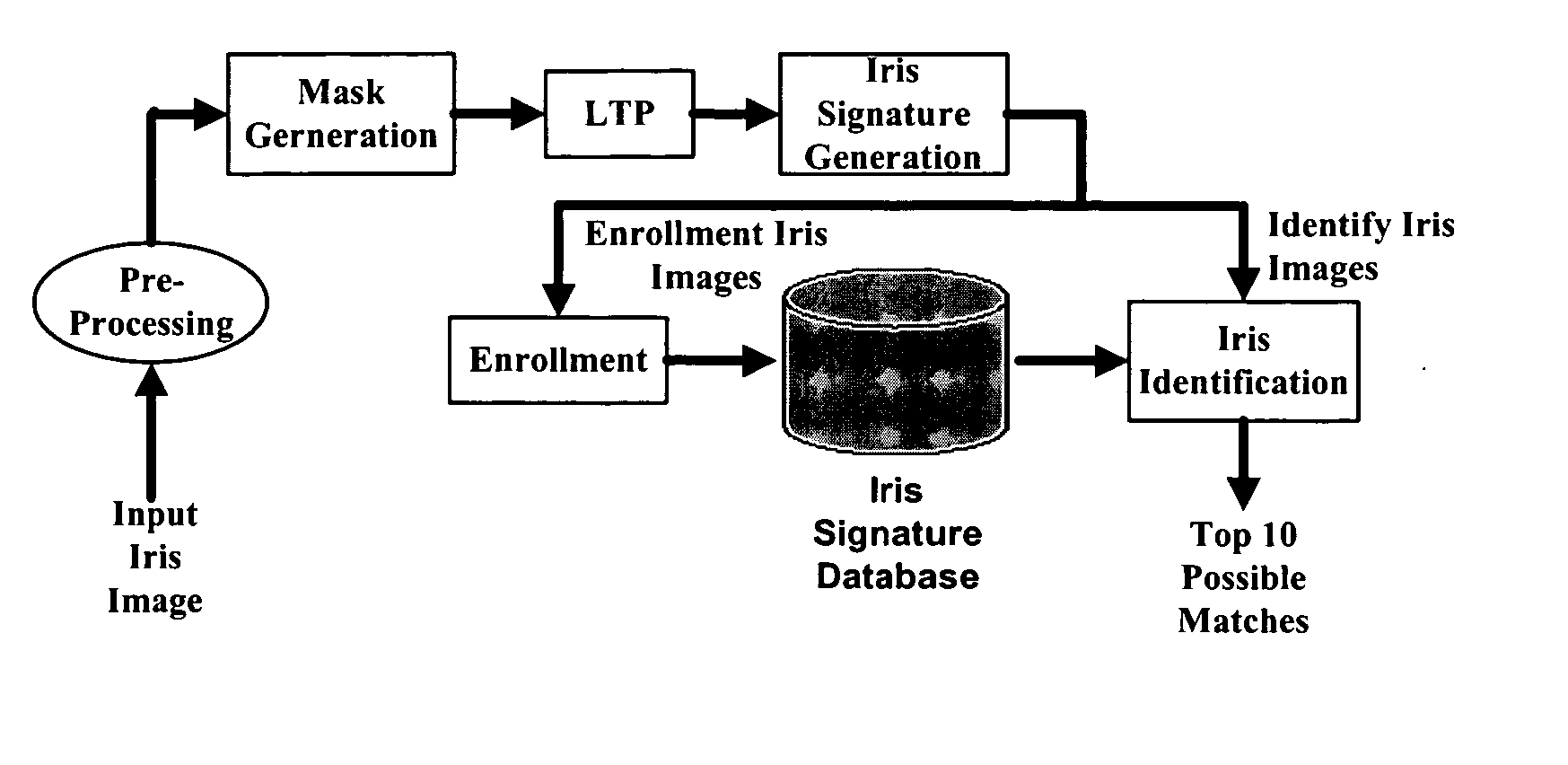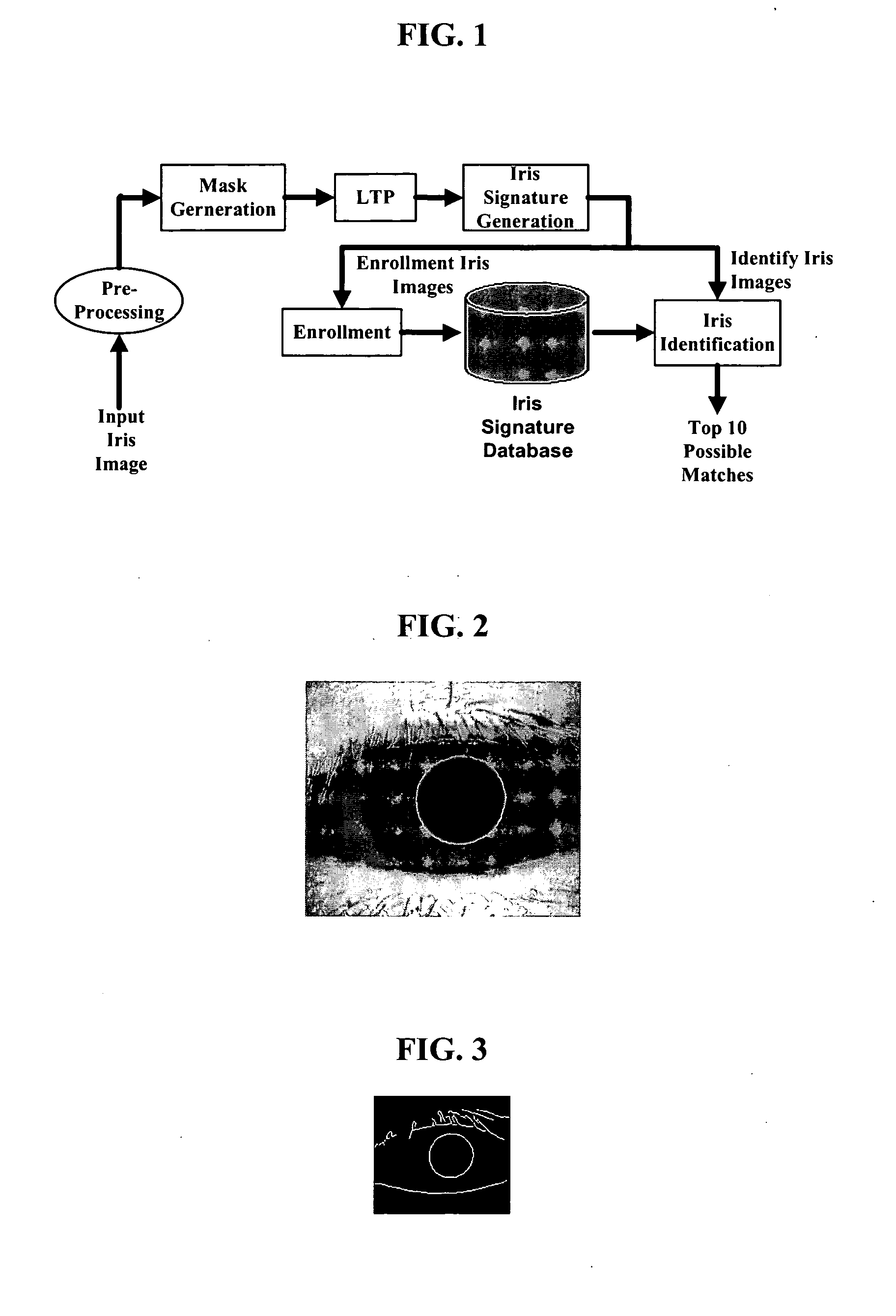One-dimensional iris signature generation system and method
a signature generation system and one-dimensional technology, applied in the field of one-dimensional iris signature generation system and method, can solve the problems of reducing reducing the computational power and time, and removing the doubt of identity, so as to save computational power and time, and reduce the computational time and power
- Summary
- Abstract
- Description
- Claims
- Application Information
AI Technical Summary
Benefits of technology
Problems solved by technology
Method used
Image
Examples
Embodiment Construction
[0036] A major problem in conventional recognition systems that analyze iris patterns is that the iris patterns are often not uniform due to variations in orientation, scale, contrast, or illumination. The present invention solves the problem of orientation variations of an iris by generating a one-dimensional signature. Further, the present invention solves the problem of scale variations of an iris by generating a mask. Still further, the present invention solves the problem of illumination variations of an iris by using a gray scale invariant Local Texture Patterns (LTP). Finally, the present invention solves the problem of contrast variations of an iris by using Du measurements. It should be noted that the present invention can be applied to non-iris imagery for texture analysis as well.
[0037]FIG. 1 illustrates an iris recognition system 100 in accordance with an exemplary embodiment of the present invention. In FIG. 1, system 100 includes an iris image input portion 102, a pre...
PUM
 Login to View More
Login to View More Abstract
Description
Claims
Application Information
 Login to View More
Login to View More - R&D
- Intellectual Property
- Life Sciences
- Materials
- Tech Scout
- Unparalleled Data Quality
- Higher Quality Content
- 60% Fewer Hallucinations
Browse by: Latest US Patents, China's latest patents, Technical Efficacy Thesaurus, Application Domain, Technology Topic, Popular Technical Reports.
© 2025 PatSnap. All rights reserved.Legal|Privacy policy|Modern Slavery Act Transparency Statement|Sitemap|About US| Contact US: help@patsnap.com



